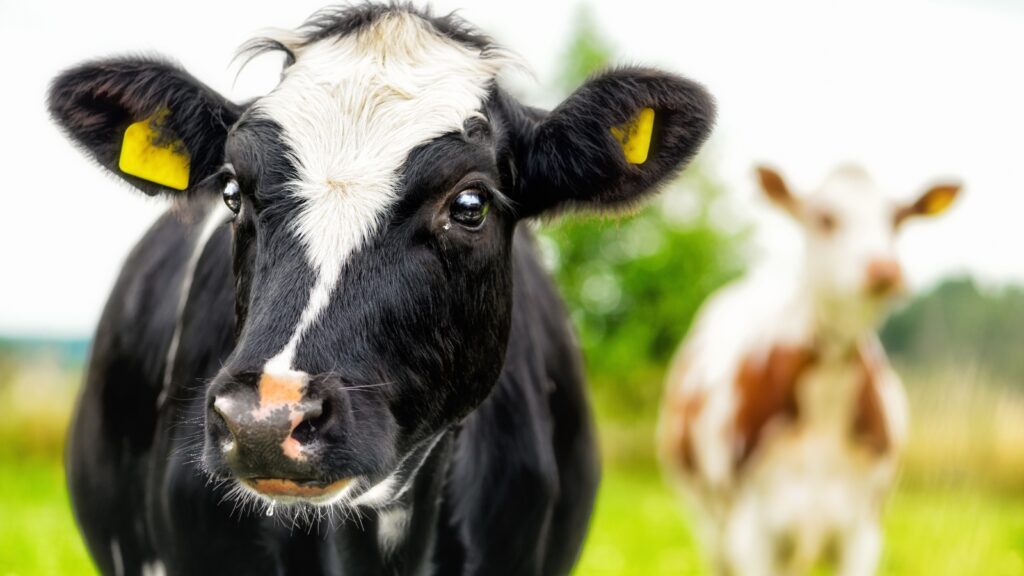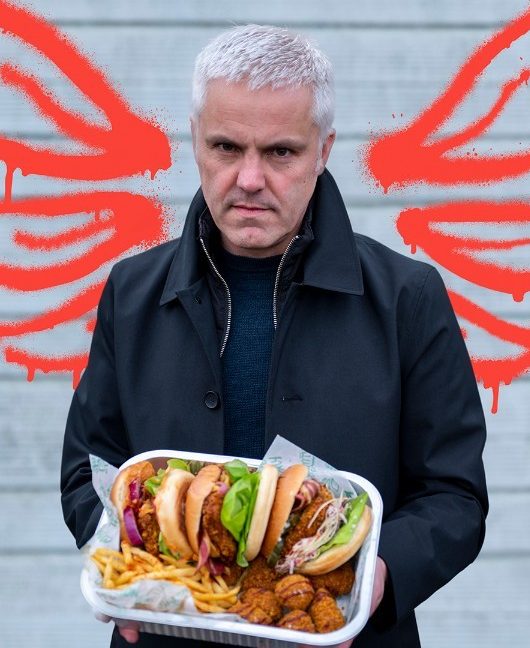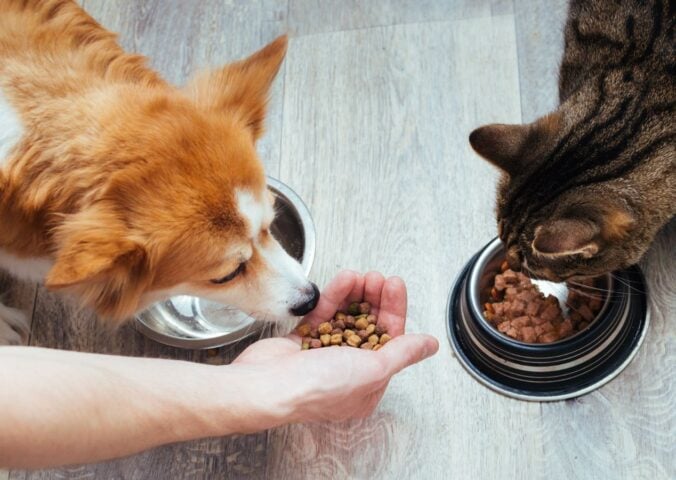As another record-breaking Veganuary ends, the backlash continues. This time, in the form of “Regenuary,” a campaign that promotes regenerative agriculture, especially animal grazing, as a solution to the climate crisis.
Advocates of the initiative encourage the public to align with it in place of Veganuary. Why anyone would want to dismantle a movement that seeks to prevent suffering, avoid another global pandemic, and keep our planet habitable is anyone’s guess. Perhaps the trillion-dollar meat industry could enlighten us.
Unperturbed by the spectacular “marketing misfire” that was “Februdairy,” animal agriculture enthusiasts are having another go with their latest campaign. And while there are some environmental benefits to regenerative agriculture, scientific researchers question just how significant these are. And, whether we need domesticated animals to achieve them.
What is regenerative grazing?
Supporters of Regenuary say that by mimicking the grazing patterns of wild animals, “livestock” can feed off the land while fertilizing it.
Their nibbling encourages plants to put down deeper roots, and their movement tramples plants, mixing their manure with the soil, which does the same. Deeper roots are beneficial because they can sequester more carbon in the soil. It all sounds good, doesn’t it?
Almost too good to be true…
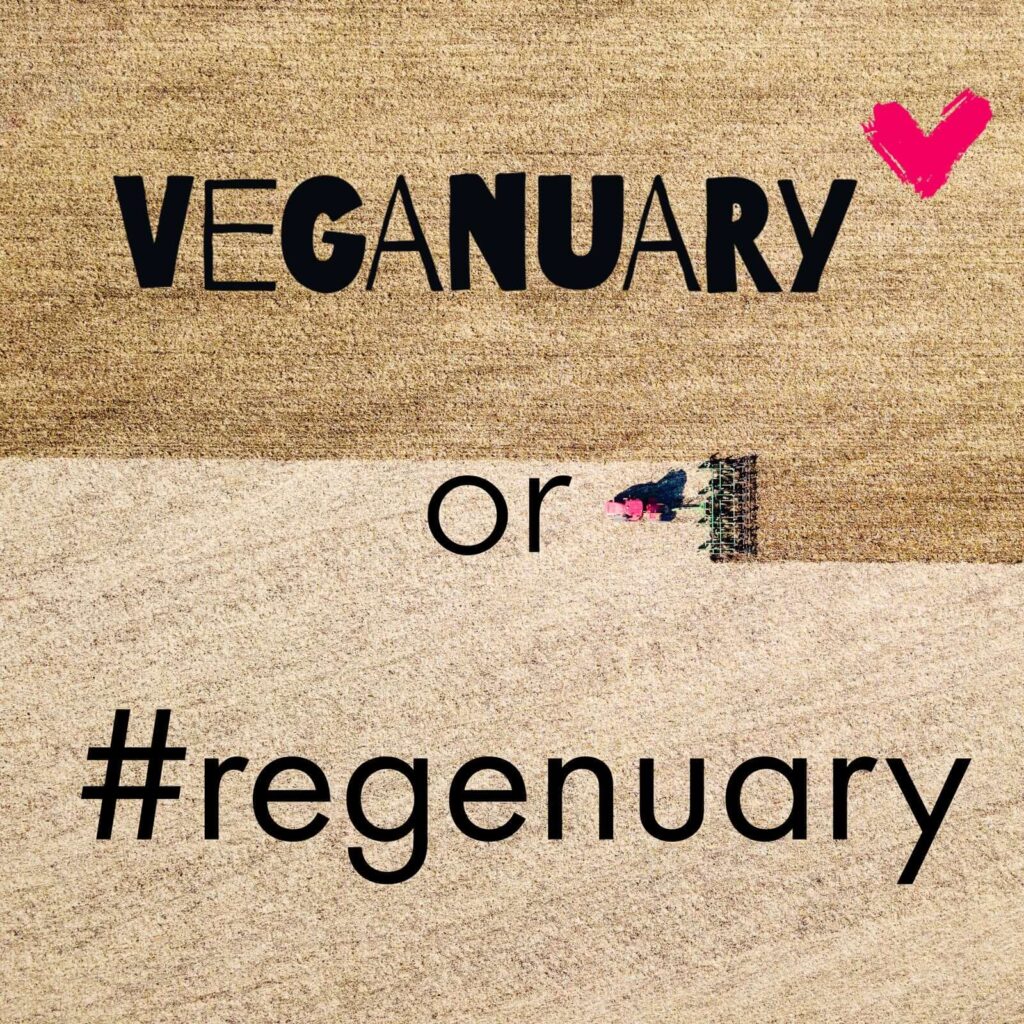
Do we need manure for fertilizer?
Currently, the world’s farmed animals produce so much waste that it cannot be absorbed by the land. It gets stored in delightful-sounding lagoons from which it leaches out.
Or, it is deliberately discharged, polluting the air, earth, and waterways. It is responsible for algal blooms that kill aquatic life in rivers, lakes, and oceans. It also exacerbates respiratory illness in people who live near farms.1
Animal waste is a health and environmental catastrophe, and it’s not as if we need the manure as fertilizer. An increasing number of farms are growing produce without any animal input at all.
These “stock-free” farms use cover crops, crop rotation, and green manures to fertilize and protect soils. And, to avoid emissions and sequester carbon. They work with nature to enrich the soil, not against it by pushing it to its absolute limits.
Do we need grazing animals?
It’s interesting that Regenuary proponents insist we need grazing farmed animals to stimulate plant roots. Because we already have wild grazers, including deer, beavers, rabbits, and boar – millions of whom are shot by farmers for being pests.
However, should domesticated grazing animals such as horses, sheep, or cows still be required in some areas, it’s entirely possible to accommodate them without killing and eating them.
They could help us, and we could look after them. Living in harmony can never involve slaughterhouses.
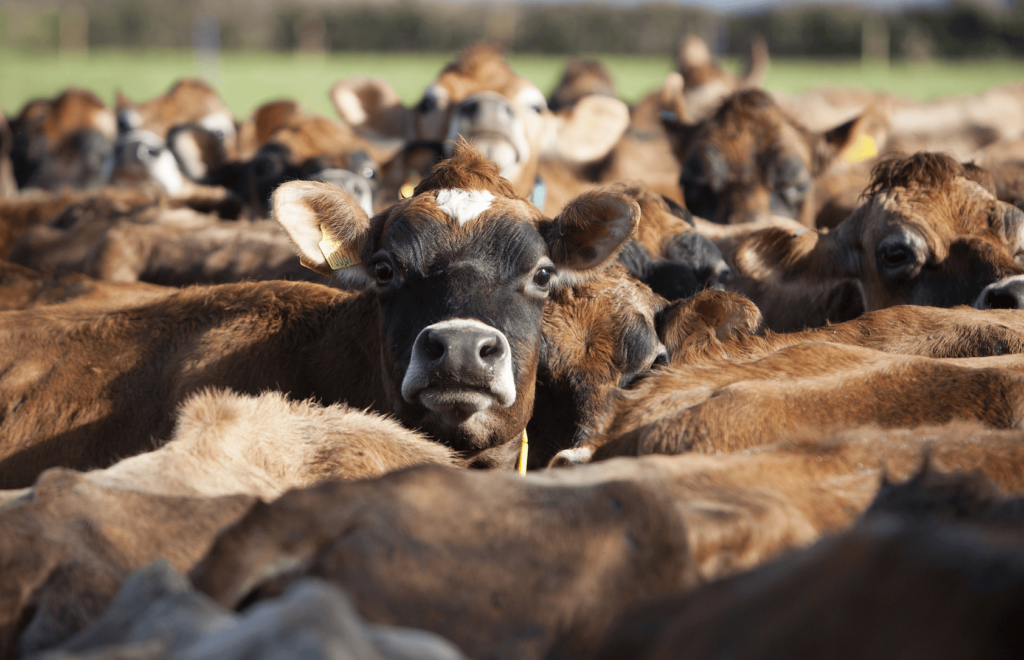
Do grazing animals help sequester carbon?
Yes. But do they sequester enough to offset the emissions from rearing the animals themselves? Well, that’s a question animal farmers and Regenuary advocates would prefer you didn’t ask.
In a report called Grazed and Confused, Oxford University’s Food Climate Research Network revealed: “Only under very specific conditions can [grazing] help sequester carbon. This sequestering of carbon is even then small, time-limited, reversible and substantially outweighed by the GHG emissions these grazing animals generate.”2
They found that, at best, grazing animals could offset between just 20 and 60 percent of the emissions. In other words, a net rise. This figure will also reduce over time. After a few decades, the soil will have sequestered all it was able to. At that point, carbon storage drops to zero.
Regenerative agriculture’s big “success” story
In 2019, the results from a study3 at White Oaks Pastures, a beef farm in Georgia, USA, was released. This farm is hailed as a regenerative farming success story, and it has claimed for years that its beef is carbon negative.
As we might expect, the farm is responsible for reduced carbon emissions compared to conventional cow meat production. However, it is not carbon negative.
As environmental researcher Nicholas Carter and Dr Tushar Mehta observed: “The study has significant lapses that grossly exaggerate or misrepresent the true soil organic carbon sequestration capacity of their farming techniques. [And] there are serious potential problems with studies funded by large industries, and this study by General Mills shows typical patterns.
All studies require critical review, but industry studies even more so.”4
One of the key issues with White Oaks Pastures’ claims is that it uses a 100-year timeframe for accounting for methane. The International Panel on Climate Change (IPCC) and all other credible bodies examine methane over 20 years because that is when most of the damage is caused.
Does methane matter?
Methane really matters. Over a 20-year timeframe, it has a warming effect 80 times that of carbon dioxide. It is for this reason that climate scientists say cutting global methane emissions is the quickest way to slow down global heating.
According to the Executive Director of the United Nations Environmental Programme, Inger Andersen: “Cutting methane is the strongest lever we have to slow climate change over the next 25 years.”
Sixty percent of the methane in the atmosphere comes from human activity.5 And cows and other grazing ruminants are the main source of it.6
Land use
Currently, animal agriculture uses 77 percent of global farming land7. But even more land would be needed for regenerative farming than for conventional farming.
That is not in dispute. Even the White Oaks Pastures study admits that its grazing methods require two and a half times more land than standard meat production. Two and a half times more!
Already the vast amount of land used for meat production has driven a devastating decline in wildlife as land is taken from nature to be used for farmed animals. Just since 1970, 60 per cent of wild animal populations have been wiped out.
Moreover, scientists declaring the sixth mass extinction is underway. Meat is cited as a leading cause.8 Regeneratively farming would only drive further deforestation and even greater wildlife losses.
Despite what Regenuary supporters might say, regenerative grazing is part of the problem; it isn’t the solution. We should be careful about being drawn into futile discussions on how much carbon might be offset by stimulating plant roots when we know for certain that removing farmed animals from the land is the fastest way to reduce agriculture’s overall GHG emissions.9
Regenerative grazing is a con, a classic case of conjurors’ misdirection. Because while we waste time debating this point, methane levels are rising fast,10 the atmosphere is warming, and our planet is dying.
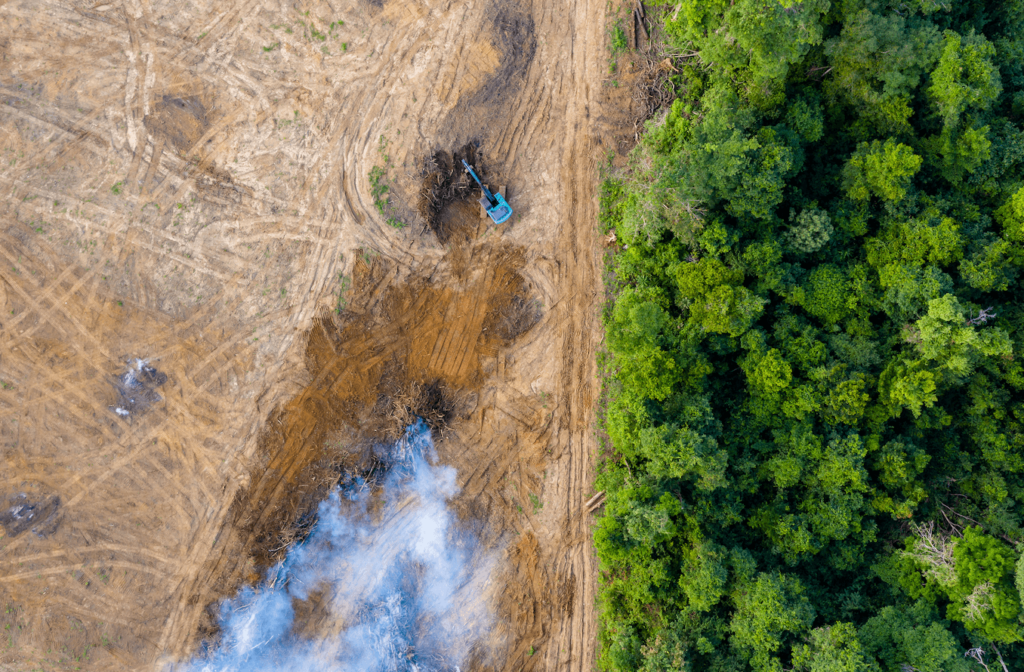
We already know the answer
We know from Poore and Nemecek’s 2018 meta-analysis of our global food systems, that almost all animal-based foods have a higher climate impact than almost all plant-based foods.11
We know that, if the world were to adopt a plant-based diet, our total agricultural land use would shrink from 4.1 billion hectares to one billion hectares. This marks a reduction of 75 percent.12
Further, this would free up vast amounts of land that could return to natural habitats and ecosystem. It would also prevent further deforestation – the biggest wins for biodiversity and carbon sequestration.
We know from 2019 IPCC research that a fully vegan diet is significantly better for the climate than eating meat, including fish, even just once a month.13 And we know that beef and lamb are so damaging that cutting them out of our diets would save seven gigatons C02e every year.
Meanwhile, a fully plant-based diet would save double that.14
Putting it into practice – without Regenuary
We have the data, and we know the fastest way to bring down emissions and to mitigate the worst effects of climate breakdown.
Now, we need an urgent and concerted effort from governments, businesses, and investors to help farmers transition away from animal agriculture. They need incentives and support for growing veganically and for protecting both the climate and the environment through land restoration.
In the meantime, Veganuary will continue to inspire, help, and guide hundreds of thousands of people who wish to reduce their own impact.
I am confident that Veganuary will continue to grow and to succeed. And that’s partly because people know greenwashing when they see it. And the stench of industry bullsh*t around regenerative grazing is overpowering.
Matthew is the founder of Vegan Fried Chicken (VFC) and the director and founder of VegCaptial – an investment fund that provides early-stage capital to companies striving to replace the use of animals in the food system.
References
1. https://www.reuters.com/article/us-health-farms-neighbors-idUSKBN18X2E4
2. https://www.oxfordmartin.ox.ac.uk/downloads/reports/fcrn_gnc_report.pdf
3. https://blog.whiteoakpastures.com/hubfs/WOP-LCA-Quantis-2019.pdf
4. https://plantbaseddata.medium.com/the-failed-attempt-to-greenwash-beef-7dfca9d74333
5. https://www.nationalgeographic.com/environment/article/methane
6. https://www.nature.com/articles/s41467-019-11066-3
7. https://ourworldindata.org/land-use
8. https://www.theguardian.com/environment/2018/oct/30/humanity-wiped-out-animals-since-1970-major-report-finds
9. Sun, Z. et al. (2022) Dietary change in high-income nations alone can lead to substantial double climate dividend, Nature Food, doi: 10.1038/s43016-021-00431-5
10. https://gml.noaa.gov/ccgg/trends_ch4/
11. https://ourworldindata.org/environmental-impacts-of-food
12. https://ourworldindata.org/land-use-diets
13. https://www.ipcc.ch/srccl/chapter/chapter-5/5-5-mitigation-options-challenges-and-opportunities/5-5-2-demand-side-mitigation-options/5-5-2-1-mitigation-potential-of-different-diets/figure-5-12/
14. https://ourworldindata.org/carbon-opportunity-costs-food
